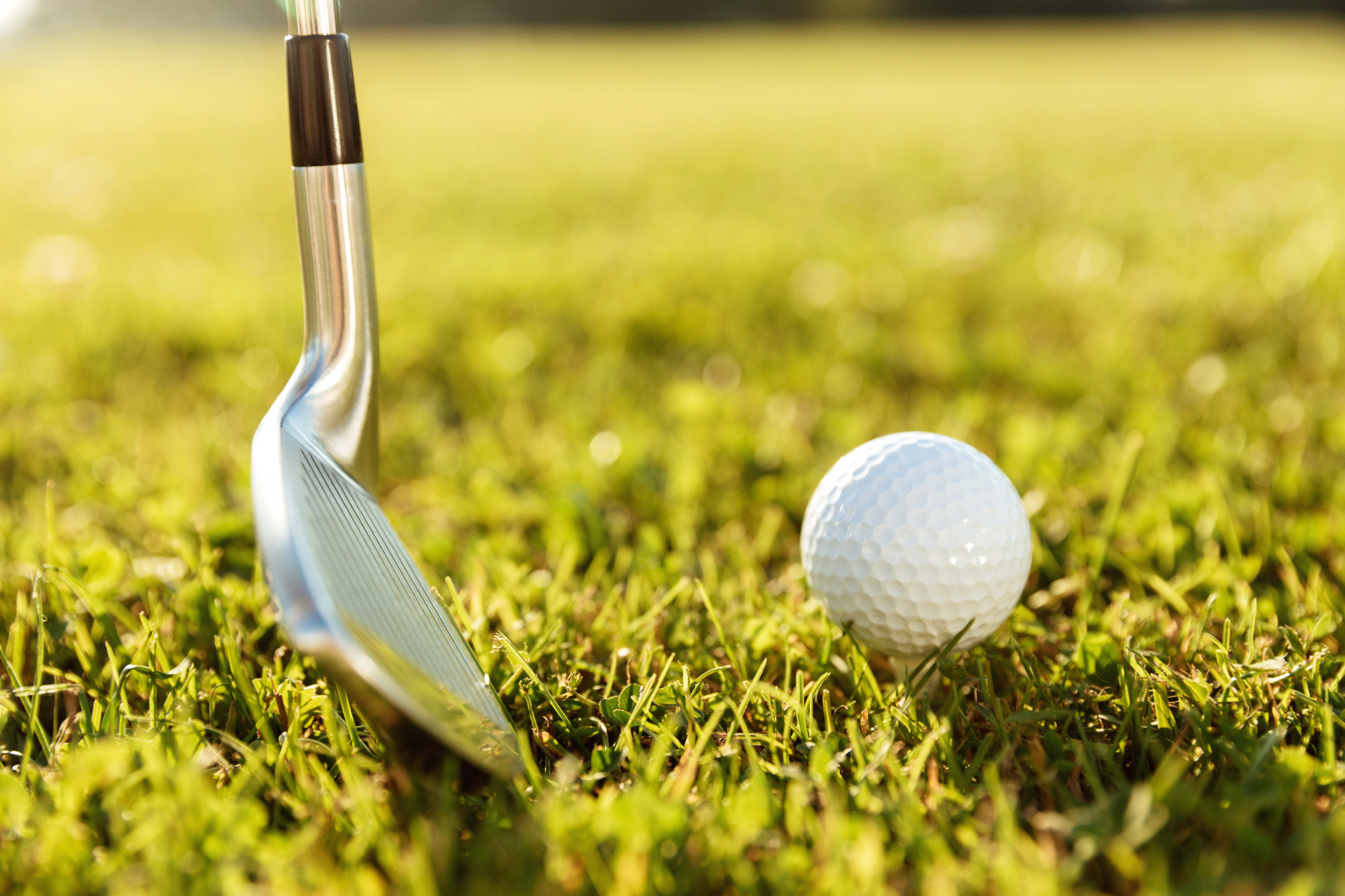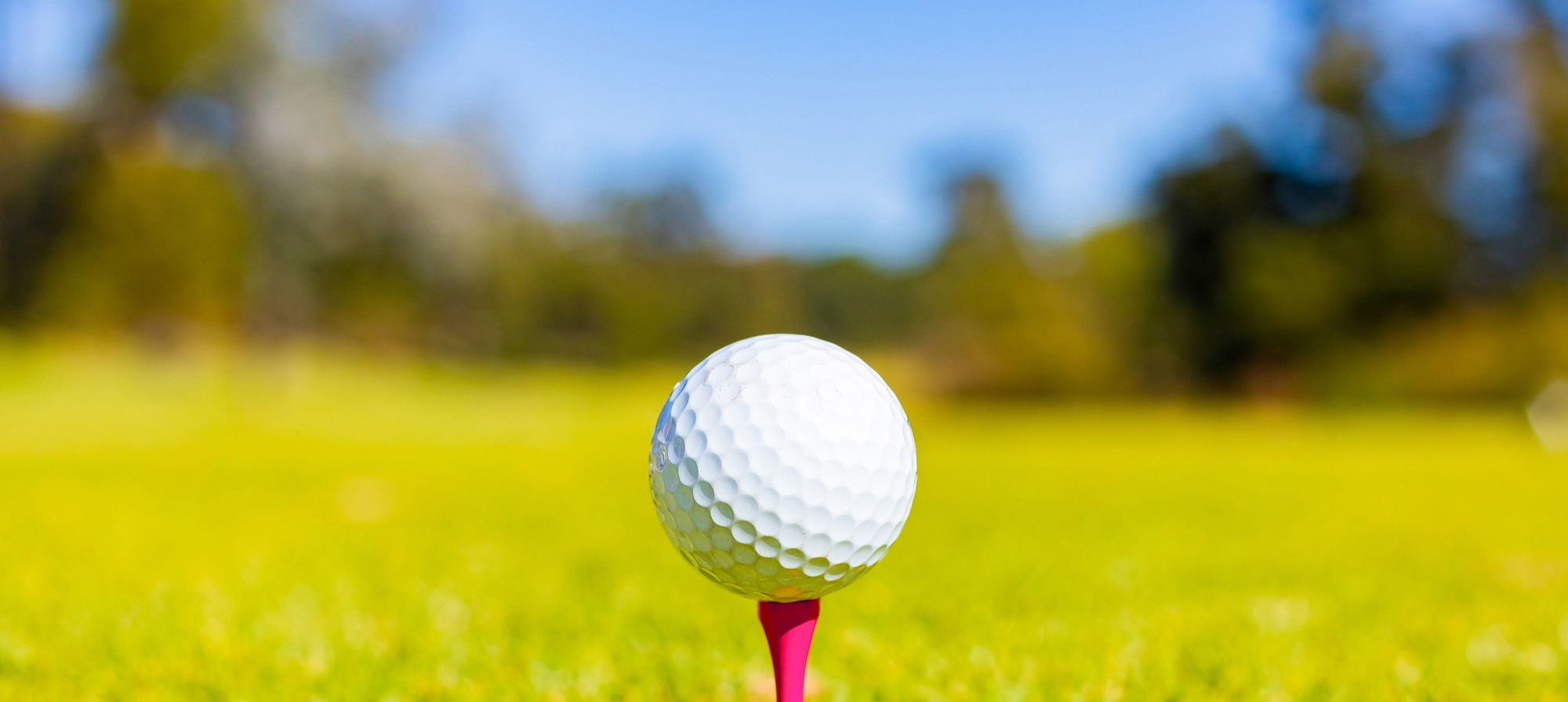Today’s golf ball has undergone a long process of transformation to become the type of ball it is nowadays. Golf is a sport that has undergone many evolutions, even though it is a discipline that has been practised since the 80s BC. Just like golf itself, the balls have also been changing from a soft ball made of feathers and leather in its beginnings to the material it is today.
What are the materials contained in today's golf ball?
This is a question we can ask ourselves because not all balls are made of the same materials. Today, a golf ball is made up of two to four components. Some of them are styrene butadiene rubber (SBR) or foamed polyurethane (PU) for the inside. Specialised resins such as magnesium ionomers also play a role in completing the outside. It all depends on the type of stroke and distance you want to achieve with the ball.
A two-part ball, for example, is made of a solid rubber core with a heavy-duty thermoplastic cover made of ionomer resin. This is the most common and popular ball on the market due to its characteristics and the trajectory it brings to the player approximately 70% of all golf balls’ sales per year.
How are golf balls made?

Although it may not seem like it, the manufacturing process of a golf ball has several steps, sometimes, depending on the ball, up to 80 different processes can be carried out. Also there are balls that go through three inspections, and up to thirty days to complete the process of obtaining a golf ball. However, the main production companies of the most usual balls in the world of golf have a process that is reduced to half the number of steps making the development faster and reducing the manufacturing time to the duration of one day.
The stages in the production of a golf ball are:
1.Creation of the centre or core: The goal is to create a spherical core of approximately 1.5 in (3.75 cm). The material used for this usually consists of a styrene butadiene rubber (SBR), in other words, a rubber that bounces. It is mixed with various chemical ingredients to make a paste. This process gives a rubbery compound, which is stretched like pizza dough by cooling between two large rollers.
Once the core material is composed, it is fed into a specific machine called an extruder. This mass is then passed through a tool that modifies its shape through a mould, giving it the form of large sugar clouds or, rather, rubber blocks.
After the transformation of the component and its shape, it is taken to a pressure moulding machine. There, an operator places the cubes in a steel mould. A curiosity is that the colour of the studs, the result of the combination of different components, changes depending on the type of materials and ball to be manufactured.
Once they are in place, a pressure of approximately one tonne of force is applied. This is a process known as bake moulding, because heat and pressure are applied to achieve the core of the ball.
2.Making the cover and dimples:After the ball core has been achieved, once cooled, an operator usually places a piece of perforated plexiglass over the mould. This retains the leftovers from the mould, so that only the ball is sucked up, or picked up, by a hoover. The excess rubber left on the piece of plexiglass is then removed and recycled.
The cores go to another moulding machine where the outer part of the golf ball is made using injection moulding or compression moulding techniques. This stage of the process also creates the characteristic dimples on the balls, which will make the ball fly further and reach a greater distance towards its target, the green.
A clarifying note
In the injection of moulding process, the core is centred within a mould cavity by a clamping mechanism and the molten thermoplastic ionomer is injected into the cavity. Pressure and high temperatures cause that the shell material is sticked with the core taking on the dimpled shape and size of the finished ball. As the plastic solidifies with cooling and hardens, the fasteners retract to remove the finished balls.
In another aspect and different technique, in compression moulding the ionomer shell is inserted into the mould which consists of two hollow hemispheres. These are brought together around the core, heated to high temperatures, and then pressed together. When the process is completed the pressure of the moulds is released and the ball with the dimples is ready to be cooled. A curious fact is that three-piece balls are usually compression moulded because the hot plastic flowing over the core can alter and probably cause the rubber threads to break.
3. Polishing, painting and final coating. Once the new balls are formed, they are usually dropped into a barrel and then cleaned. The production of the balls by these techniques usually leaves traces of plastic around the diameter of the ball due to the moulds. The next process is to remove them.
An automated milling machine removes the excess plastic to polish the ball, leaving it smooth and free of imperfections. The balls are then transferred to a quality check point. If the ball is not well polished or uniform, it will not pass to the next stage.
Once checked for quality, they are taken to the labelling stage. At this finishing point, robotic arms with engraved steel pads impregnate the stamps or symbols with ink which are transferred to the balls. The pads usually print a player number, company brand, type and model on each ball. After the paint is applied, the balls are subjected to ultraviolet rays or some drying technique so that the ink remains intact.
For further protection, some balls are sprayed with polyurethane to protect the ink with the ball specifications. And where appropriate personalised engravings are sometimes made on them.
4.Drying: Finally, after applying the different specifications, or customisations, they are transferred to a drying machine where they are usually heated to 66ºC for a few minutes. Once the process is finished, the manufactured balls are ready to be packaged and taken to the points of sale where thousands of players and golf lovers will use them to practice the sport, they are so passionate about.
How long does a golf ball last?
You may not know so this is a fact that can make you a great expert on the subject. Golf balls have an “expiry date”. Several recent studies reveal that a golf ball has a high level of performance up to 126 holes. In other words, seven rounds of 18 holes.
To be more specific, we could say that the lifespan of a golf ball lasts approximately 500 strokes. It is stipulated that most players will not notice the difference in all these strokes.
What types of golf balls are there?

Having explained the materials, the manufacturing process and how long a golf ball can last, we would like to specify, although we have already given hints what types of golf balls exist. The classification is as follows:
Two-layer: The core of this type of ball is soft, unlike the cover which is manufactured in a more resistant way. This type of ball allows longer distances; however, it is more difficult to control its effects and the possible unforeseen events that may arise. It is without a doubt the ball of choice for professional and amateur players with low handicaps.
Three-layer: Like the two-layer, its core is also soft, but the difference is that the third layer is made of urethane, a factor that makes medium handicap players usually choose this model. All this is to achieve a much greater control on short shots.
Two layers under compression Unlike the previous ones, the core is hard, and the cover is soft. This is what makes the formation of these balls somewhat complex. The distance achieved with this type of ball is less, but the player who uses it can control his shots better. This type of ball is ideal for players with high handicaps, beginners who are just starting to practice this sport, as it does not prioritise strength but rather promotes control and teaching to achieve the desired effect.
Multi-layer: The multi-layer balls are particularly chosen because the variability of its wrapping attached to the core make the strokes more accurate. The greater the number of layers in the core, the more the distance to the drive increases, the more the intermediate layers improve the spin of the irons. Finally, the more outer layers, the greater the control on short shots.
So, this has been a lesson on how golf balls are made All this information is applicable on the course, and you can make the right choice, depending on the weather conditions and the facilities. This way, you will be able to practice our favourite sport from a more professional and technical position. Read our blog and come to Lanzarote Golf to become an experienced player.


